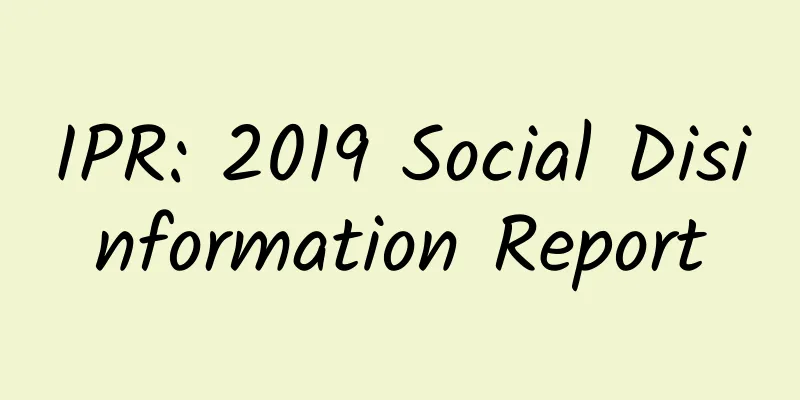Can I eat corn during confinement?

|
Many people like to eat corn. This kind of food contains more vitamins, and eating corn is helpful for promoting human digestion and excretion. However, when eating corn, you need to understand its preparation method so that it will not affect the body when eating. The common way to eat corn is to cook it. This preparation method makes it easier for the body to digest when eating. So can you eat corn during confinement? Many people are not very clear about whether they can eat corn during confinement. Women should pay attention to their food choices during confinement and reduce the choice of foods that are difficult to digest and highly irritating. Therefore, the following is a detailed introduction to whether corn is an option. Can you eat corn during confinement? Corn is the seed of the grass plant Zea mays. It is native to Mexico and Peru in Central America, was introduced to my country in the 16th century, and has a cultivation history of more than 400 years. It is currently grown all over the country, especially in the Northeast, North China and Southwest provinces. Flint corn is commonly grown in Northeast China, while dent corn, which is suitable for grinding into flour, is mostly grown in North China and is inferior to flint corn in quality. In some areas it is the staple food. Corn is an excellent health product among coarse grains, and eating corn is very beneficial to human health. The endosperm of corn is rich in starch, protein, lipids, minerals and vitamins. The corn embryo is particularly large, accounting for 10%-14% of the total weight, and contains a large amount of fat, so oil can be extracted from the corn embryo. Because corn contains a lot of fat, it is easy to become rancid and deteriorate during storage. Corn can be ground into flour or made into rice. There are no grades of cornmeal, only differences in coarseness and fineness. Corn flour can be used to make steamed bread, silk cakes, etc. The protein in corn flour does not have the ability to form gluten elasticity and has poor gas retention properties. It needs to be mixed with flour before it can be used to make various fermented snacks. The broken rice made from corn is called corn dregs, which can be used to cook porridge and stew rice. The very tender corn that is not yet mature is called "baby corn" and can be used to make dishes. Some new and special corns have appeared on the market recently: fruit corn, glutinous corn, and popping corn. Nutritional Value 1. Corn has a high cellulose content, which can stimulate gastrointestinal motility and accelerate fecal excretion, and can prevent and treat constipation, enteritis, intestinal cancer, etc. 2. The vitamin E contained in corn can promote cell division, delay aging, lower serum cholesterol, prevent skin lesions, and reduce arteriosclerosis and brain function decline; 3. Researchers pointed out that the progesterone and zeaxanthin contained in corn can fight against eye aging. In addition, eating more corn can inhibit the side effects of anti-cancer drugs on the human body, stimulate brain cells, and enhance brain power and memory. 4. According to foreign medical data, the incidence of cancer is generally lower in areas where corn is the staple food. This may be because corn is rich in magnesium, selenium and other elements that inhibit tumor growth. In particular, corn contains a lot of glutamate, which has a brain-enhancing effect. It can help and promote brain cells to breathe. During physiological activities, it can remove waste from the body and help eliminate ammonia in the brain tissue. Therefore, eating it regularly can improve brain health. Edible Effect Corn is mild in nature, sweet and light in taste; it enters the spleen and stomach meridians. It can benefit the lungs and calm the mind, strengthen the spleen and stimulate the appetite, and promote diuresis and relieve stranguria; it has certain effects on preventing cancer, lowering cholesterol, and strengthening the brain. Target Group It can be eaten by most people, and is especially suitable for people with spleen and stomach qi deficiency, insufficient qi and blood, malnutrition, arteriosclerosis, hypertension, hyperlipidemia, coronary heart disease, cardiovascular disease, obesity, fatty liver, cancer patients, memory loss, habitual constipation, chronic nephritis edema, and middle-aged and elderly people. The above is a detailed introduction to corn. Can you eat corn during confinement? Women should reduce their choice of corn during confinement. Many people eat corn by gnawing it, which will affect women’s teeth. Therefore, women can eat more millet porridge during confinement. This kind of food will not cause harm to women’s bodies.
|
<<: Can I eat Tremella during confinement?
>>: Can I eat bamboo shoots during confinement?
Recommend
You're a nice guy, but I won't date you.
Leviathan Press: When we help a stranger, such as...
Medical abortion one month human chorionic blood test 12
When a person becomes pregnant, the estrogen leve...
Alkaline foods that make you younger
Alkaline foods that make you look younger the mor...
Why can't apples be stored together with bananas? Why do kiwis ripen faster when placed together with apples?
Apple is a deciduous tree belonging to the genus ...
Why does a pregnant woman have a bitter mouth?
We need to use our mouth to eat every day. If the...
What are the villous labia minora?
In recent years, the incidence of gynecological d...
Why do girls suddenly gain weight?
Compared with men, women are more concerned about...
Can fried garlic be eaten if it is bitter? What is the reason for the bitterness of fried garlic?
We all know that there are many ways to eat garli...
How many months of pregnancy does morning sickness start?
After becoming pregnant, female friends will expe...
The consequences of secondhand smoke for women
Smoking is very harmful, and scientific research ...
What to do if your uterus hurts after a cesarean section
What to do if you have uterine pain after cesarea...
Why does septate uterus occur?
Why does septate uterus malformation occur? I bel...
How deep is the hymen?
The hymen does not grow inside the vagina when it...
Can a 9-month-old child eat meat? What should a 9-month-old child pay attention to when eating meat?
We all know that when babies grow up to a certain...
Overnight rice can be fatal? Beware of "fried rice syndrome"
Rice is a common staple food, and many people mak...









